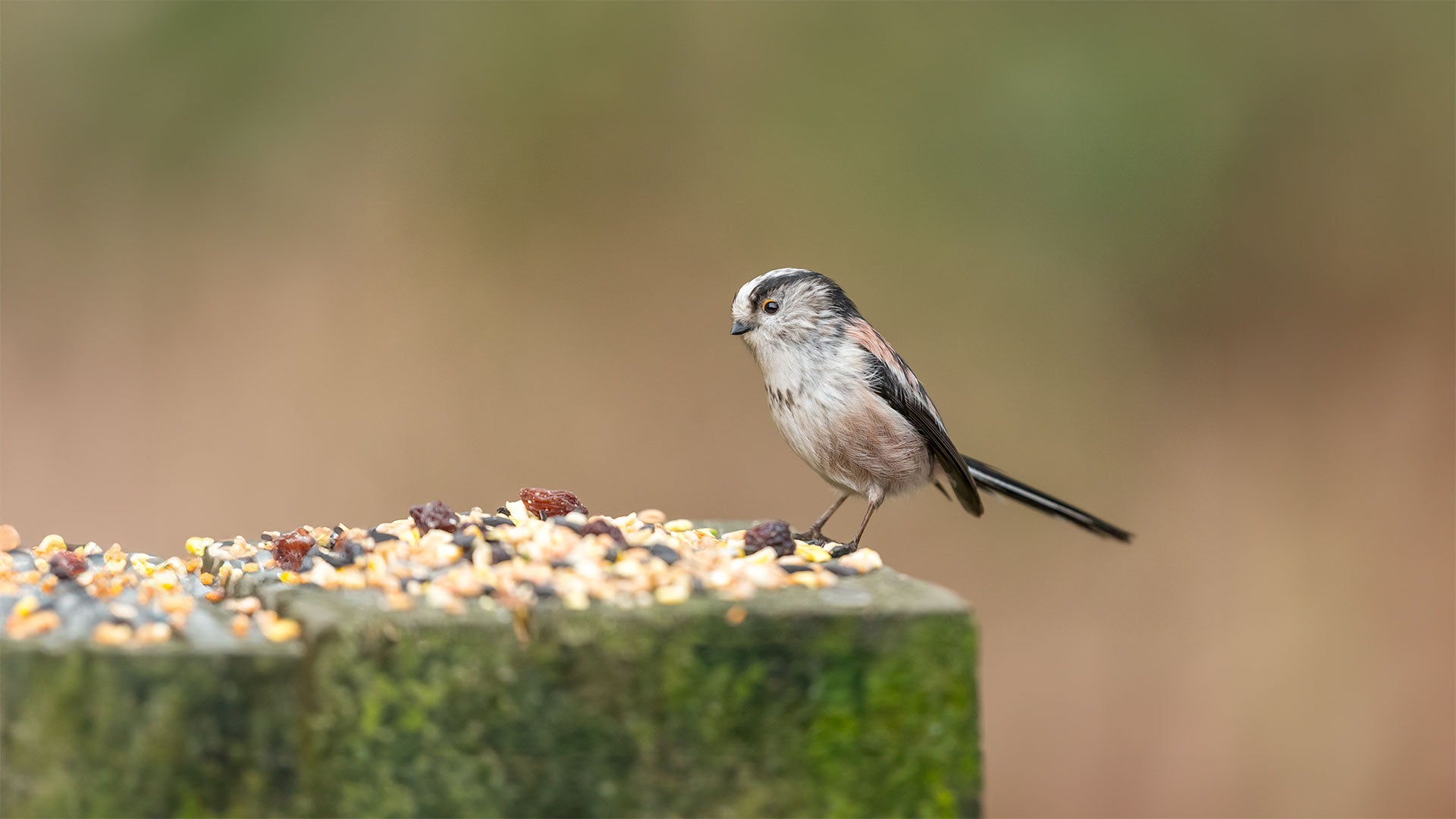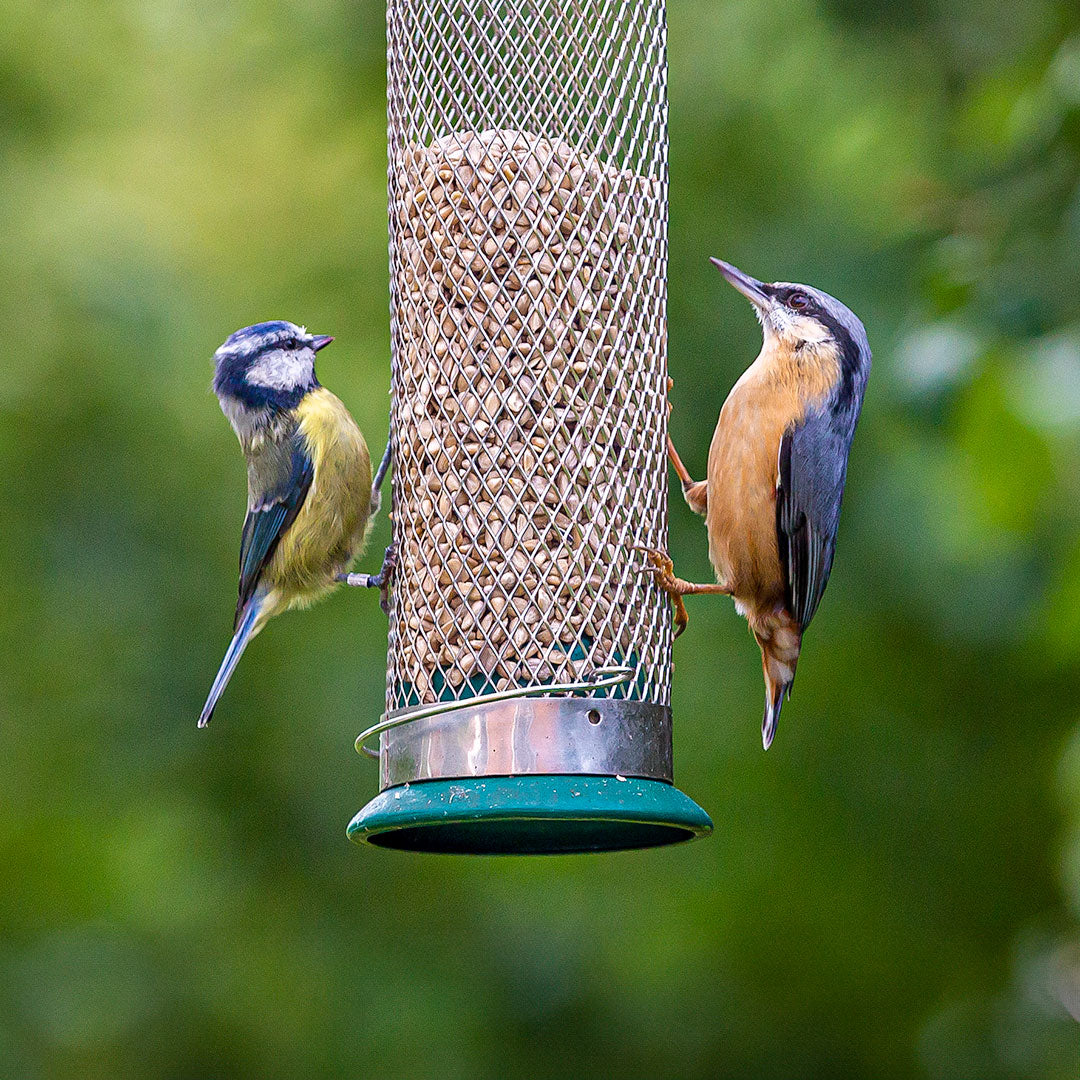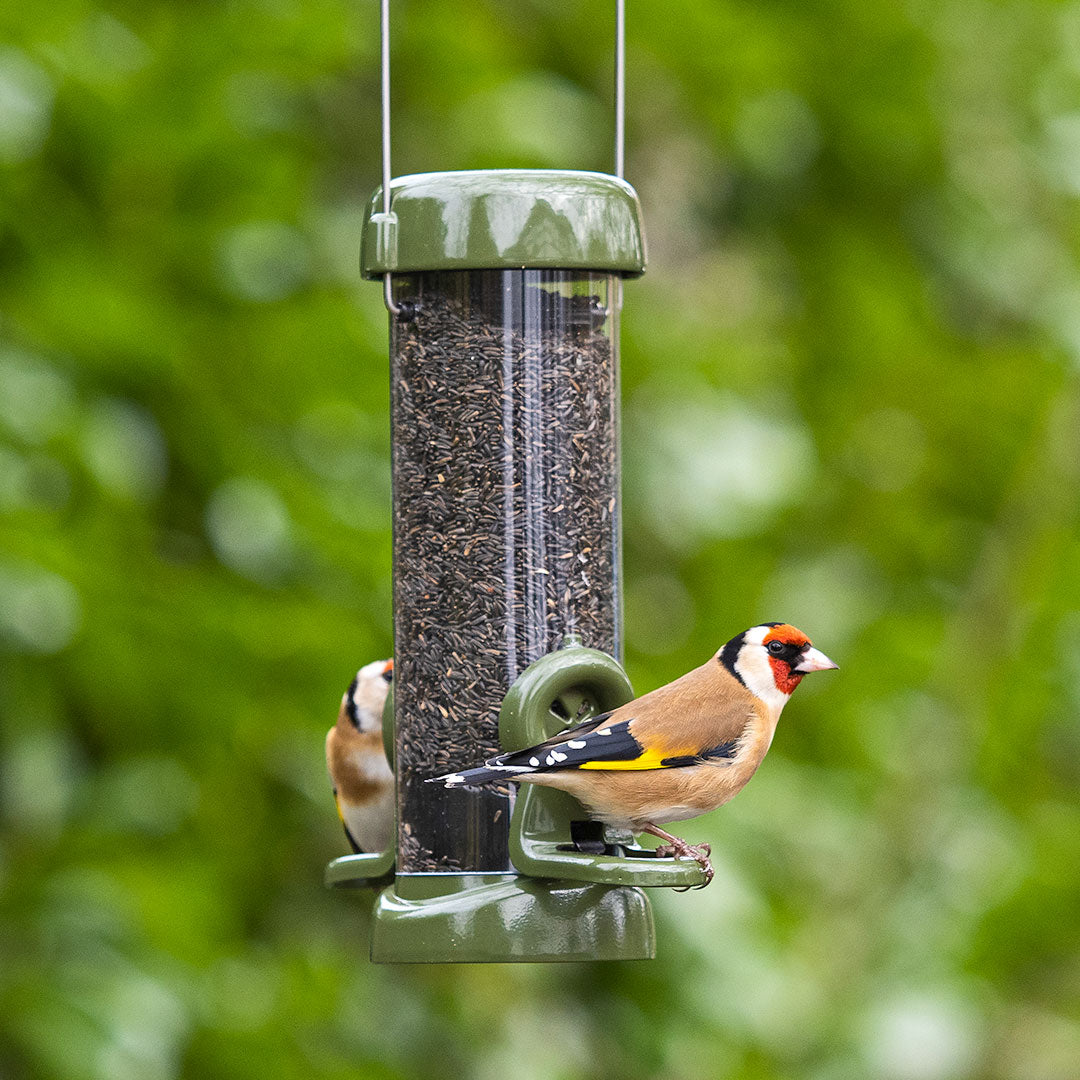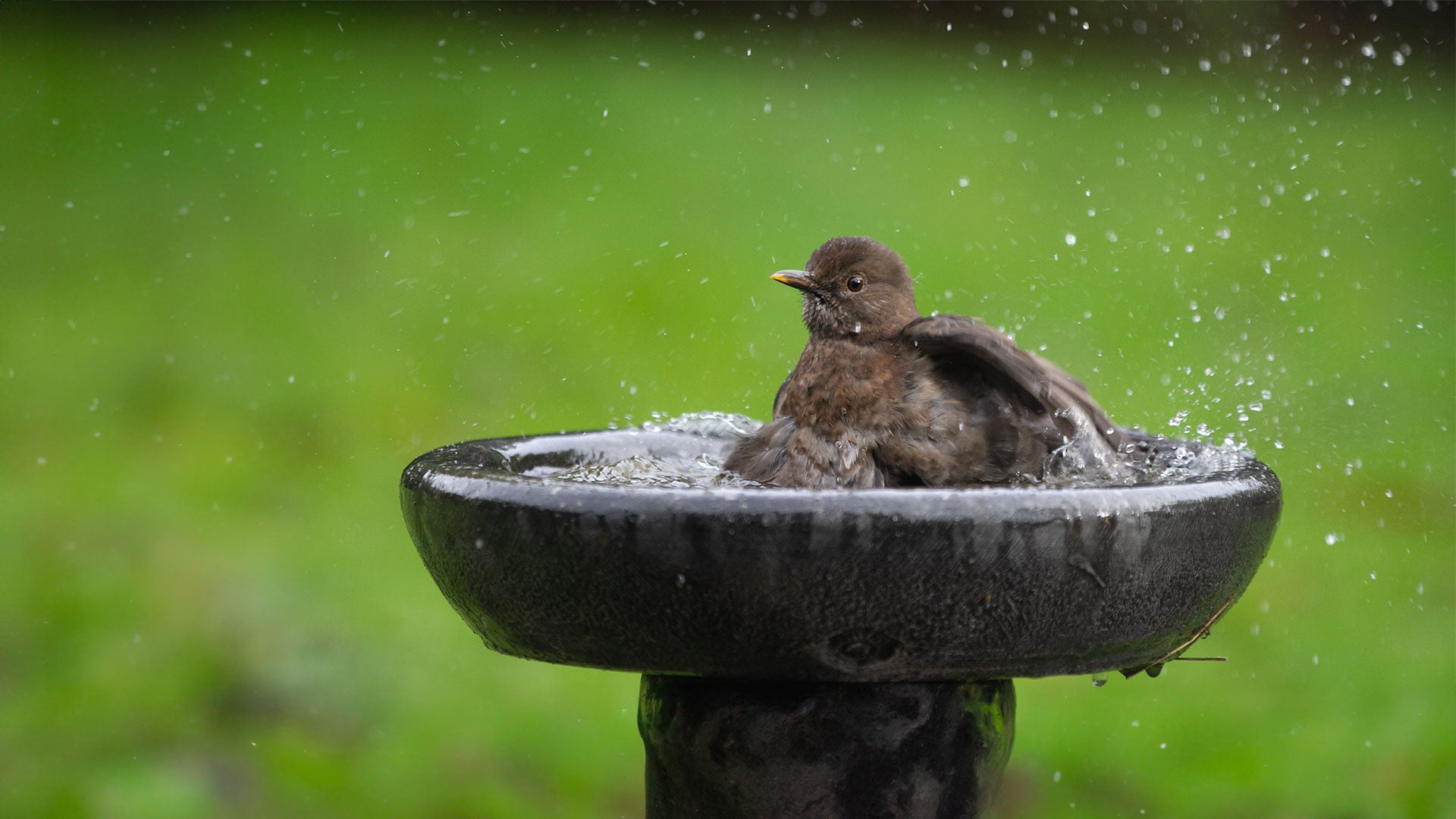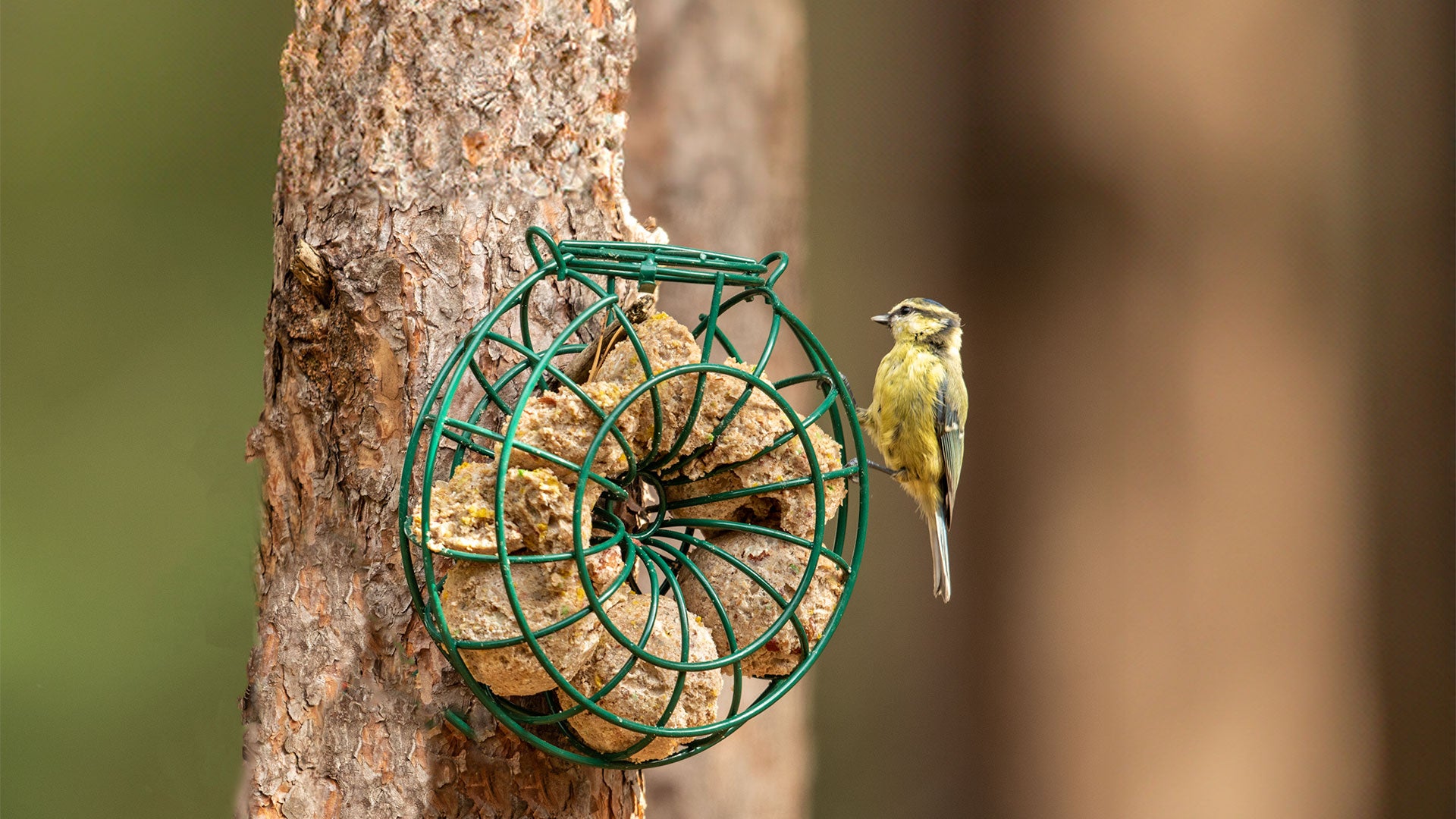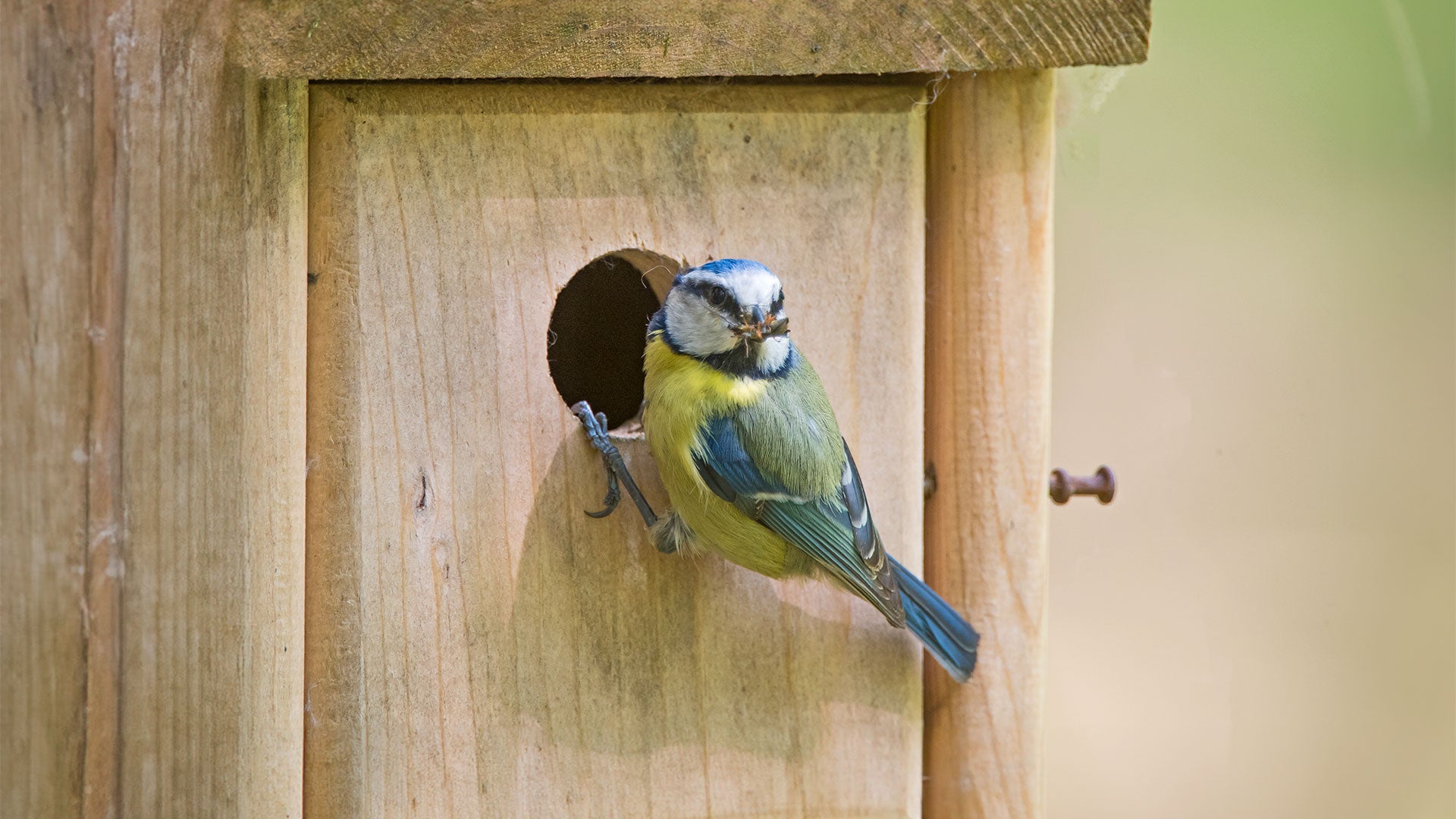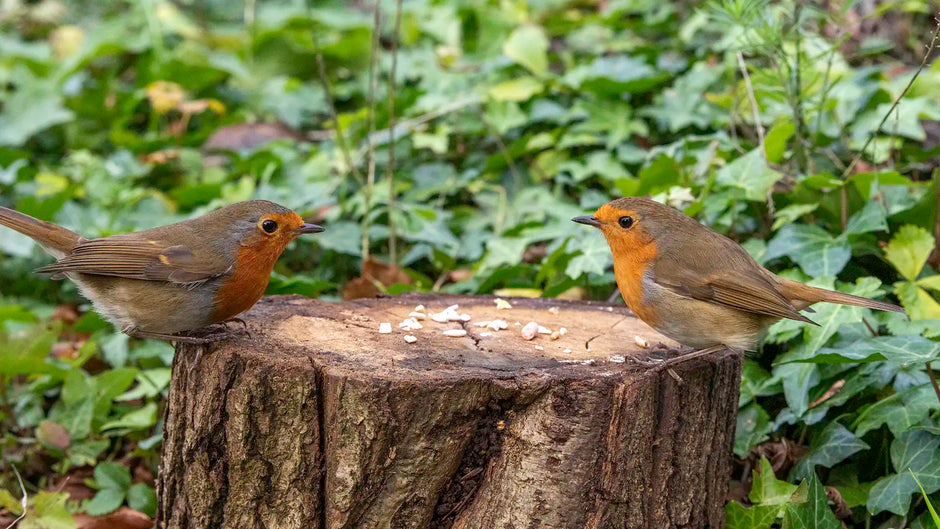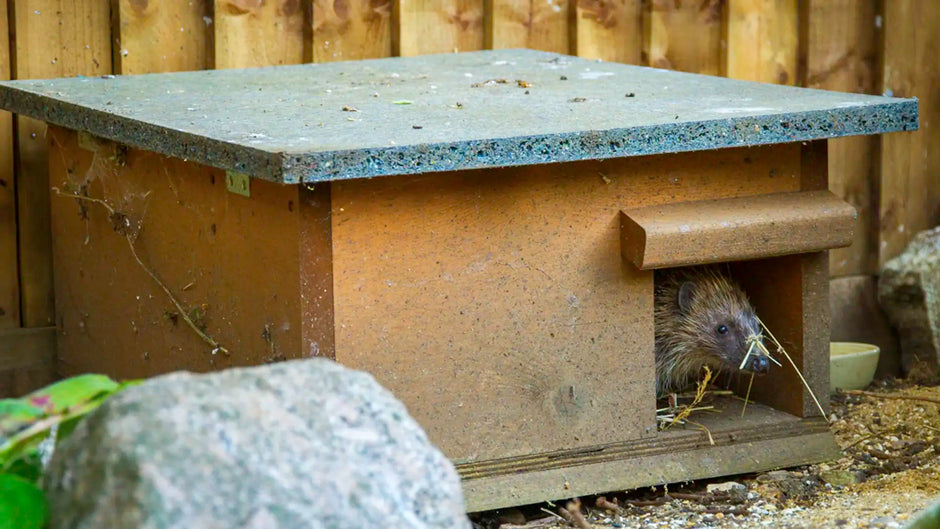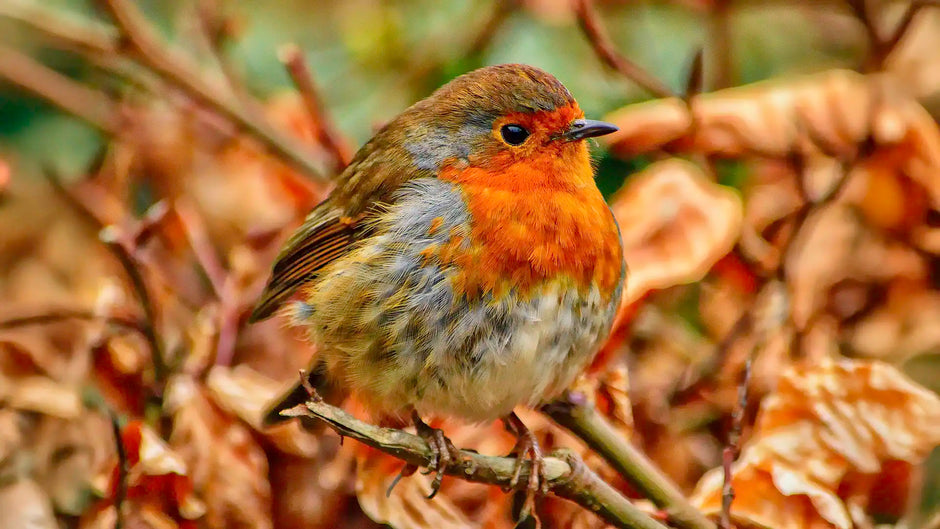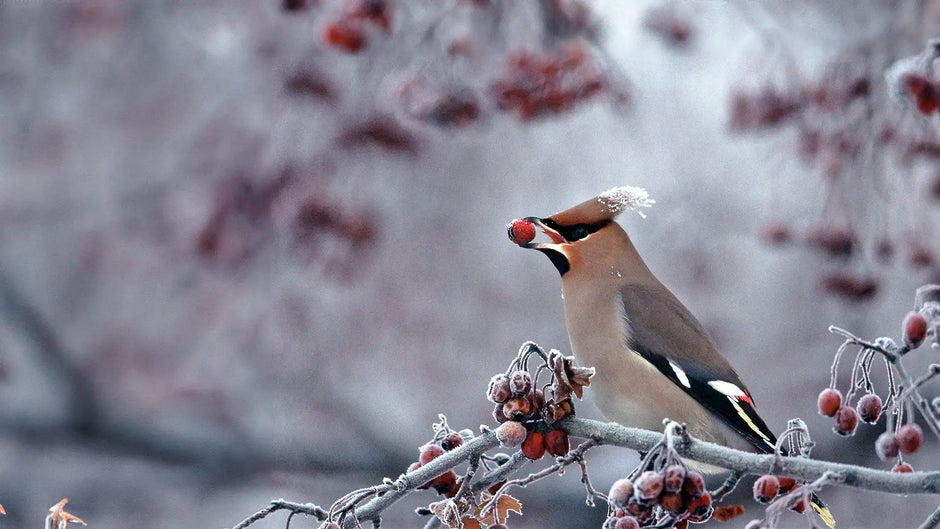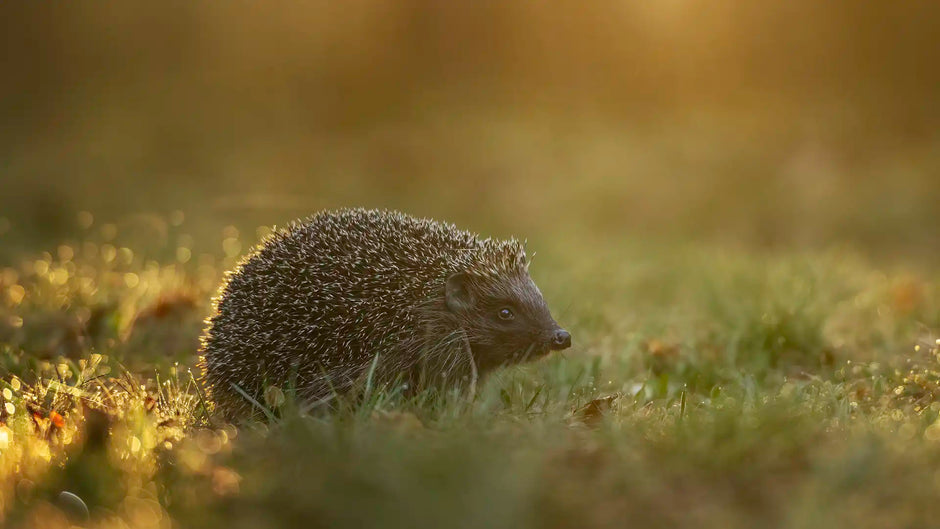A - Z Garden Bird Identification Index
(Sylvia atricapilla)
Often one of the first warblers to arrive in spring, Blackcaps fill gardens and woodlands with their rich, fluting song. Increasingly, some now spend the winter here, brightening berry bushes on frosty mornings.
Identification
Length: 14 cm.
What does a Blackcap look like?
Males have a neat black crown extending to the eyes, with greyish upper parts and pale grey underparts. Females sport a warm brown crown and softer grey body. Juveniles are browner, with yellow-tinged underparts.

Blackcap call/song – What does a Blackcap sound like?
A sharp “tak-tak” call when alarmed, and a rich, warbling song often compared to a Blackbird in miniature.
How long do Blackcaps live for?
Typically 2 years, breeding from their first year. The UK longevity record is over 10 years.
Habitat & Nesting
Where do Blackcaps live?
Found across most of the UK, though scarcer in Scotland. They favour woodland edges, scrub, hedgerows, orchards, and well-planted gardens.
Where do Blackcaps nest?
Breeding starts in May. Nests are built low in dense vegetation—often bramble or shrubs—crafted from grass and roots.
Blackcap nesting habits
The female lays 4–5 pale eggs speckled in brown or grey. Both adults share incubation for 12–14 days and feed the chicks until they fledge about 14 days later. Two broods are common.
Where do Blackcaps sleep?
They roost in thick bushes or bramble tangles, concealed from predators.
Where do Blackcaps go in the winter?
Many migrate south in autumn, but growing numbers overwinter in the UK, especially in gardens with berry-rich shrubs.
Diet & Feeding
What does a Blackcap eat in the wild?
Insects, berries, fruit, and occasionally worms.
What should you feed Blackcaps in the garden?
Where should you feed Blackcaps?
- Feeder: Above 1m high
- Bird Table: Open-topped or covered
- Ground: Not suitable
How to attract Blackcaps to your garden?
Offer suet and sunflower hearts from elevated feeders. Plant berry-bearing shrubs such as holly or cotoneaster for natural winter food.
Explore more in our A-Z Bird Identification Guide to discover other garden visitors and learn what to feed them.


